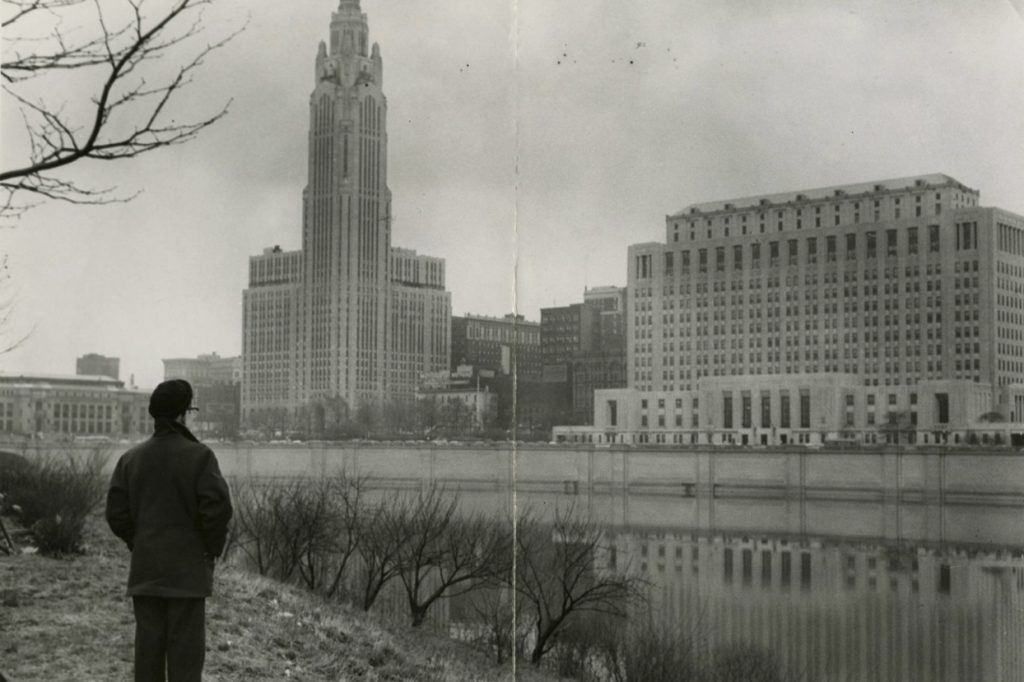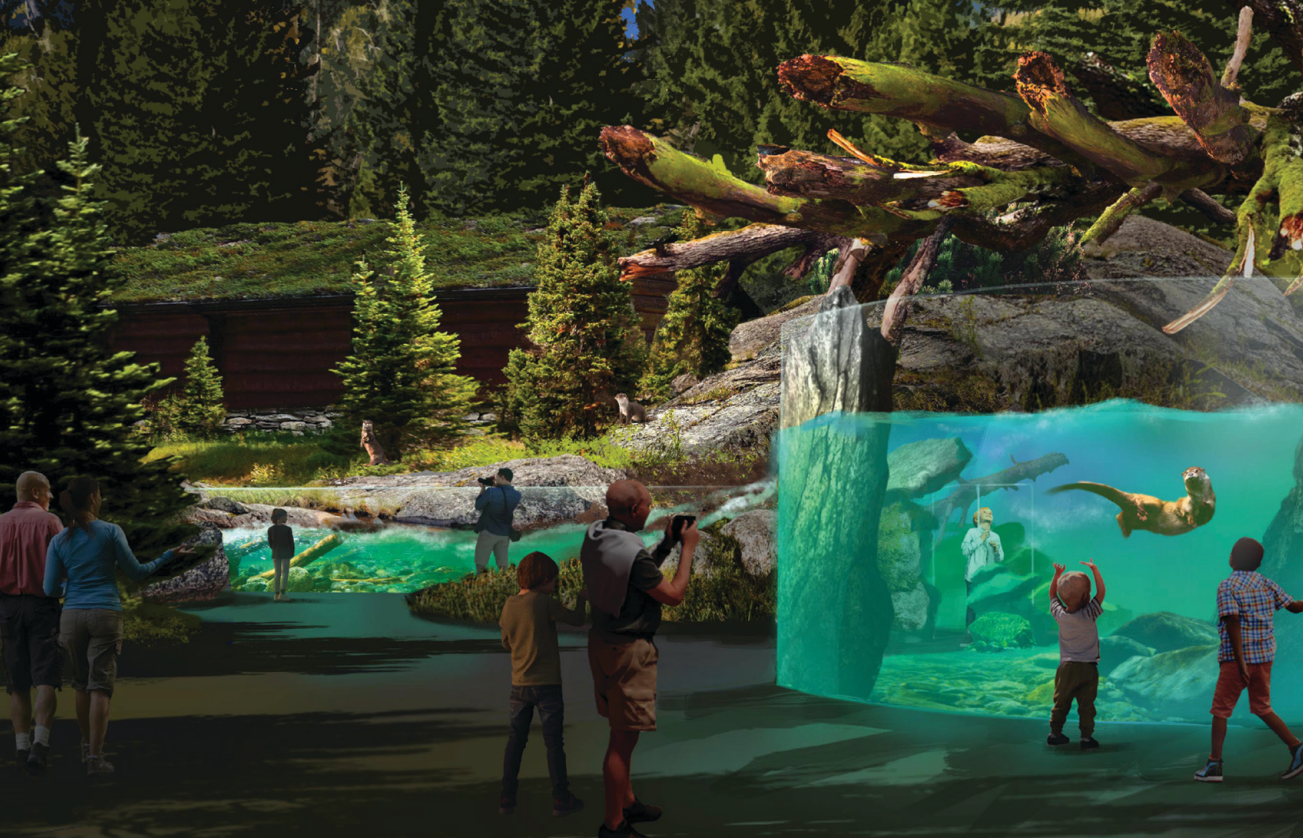The year 1927 stands as a significant juncture, marked by a tapestry of events that shaped local communities and reverberated on a global scale. From the heart of Columbus, Ohio, to the far reaches of the world, this year encapsulated a unique blend of progress, challenges, and cultural shifts.
It's also the year the Columbus Zoo opened its doors for the local community!
Join us on a journey back in time as we delve into historic events that unfolded in 1927… at the Zoo, in the City of Columbus, and around the world.
Local Perspectives: Columbus, Ohio

- LeVeque Tower Opens: The 47-story skyscraper, then known as the American Insurance Union Citadel, is completed, becoming the fifth-tallest building in the world at that time.
- It Was Hot, but This Year was Hotter! The highest recorded temperature of 1927 was recorded on July 1 at 91 degrees. To date in 2023, the highest temperate has been 94 degrees.
- 1927 Buckeye Football: As part of the 1927 Big Ten Conference season, OSU played Wittenburg, Iowa, Northwestern, Michigan, Chicago, Princeton, Denison, and Illinois. They compiled a 4-4 record but still won the point battle, 131-92.
Global Milestones: Worldwide Events of 1927

- Charles Lindbergh's Transatlantic Flight: On May 20-21, 1927, Charles Lindbergh achieved an astonishing feat by completing the first solo nonstop transatlantic flight from New York to Paris. His aircraft, the Spirit of St. Louis, made history and propelled Lindbergh to international fame.
- The Birth of Television: Philo Farnsworth transmitted the first television image, a simple straight line, on September 7, 1927, ushering in an era of technological revolution that would forever change how information and entertainment were disseminated across the globe.
- The Construction of Mount Rushmore: In 1927, sculptor Gutzon Borglum began the ambitious project of carving the likenesses of four American presidents—George Washington, Thomas Jefferson, Theodore Roosevelt, and Abraham Lincoln—into the granite face of the mountain in the Black Hills of South Dakota.
As we reflect on the historic events of 1927, we're reminded of the interconnectedness of local narratives and global shifts. So, let's continue with Zoo history and what brought us to where we are today, both within our own communities and on a global stage.
A Near-Century of Wonder: The History of the Columbus Zoo Since 1927

Nestled in the heart of Central Ohio, the Columbus Zoo and Aquarium stands as a beacon of conservation, education, and community memories. With a history spanning nearly a century, the Zoo has evolved from a modest collection of animals to a world-renowned haven for wildlife preservation and community pride.
1927-1960s: The Humble Beginnings
Established in 1927 with just a few donated animals, the Columbus Zoo's early years were characterized by its small size and limited resources. Under the leadership of Harry P. Wolfe, the Zoo began its mission to inspire appreciation and understanding of wildlife. By the 1940s, the Zoo's animal collection had grown, and a new era of expansion was on the horizon.
1951 welcomed the Zoo’s first three gorillas. Then, in 1956, Colo was born at the Columbus Zoo, making history as the first gorilla to be born in professional care. She lived at the Zoo until her passing in 2017.
1970s-1980s: A New Vision Emerges
The arrival of Jack Hanna in 1978 marked a turning point for the Columbus Zoo. Hanna's charismatic presence and unwavering dedication helped transform the Zoo into a dynamic and engaging institution. During his tenure, the Zoo added groundbreaking habitats like Manatee Coast and the African Forest, providing visitors with immersive experiences and driving home the importance of conservation efforts.
1990s-2000s: Conservation Takes Center Stage
The year 1990 welcomed the arrival of a bonobo troop, and the Zoo became one of only four zoos in North America to host this endangered species.
The late 20th century saw the Columbus Zoo solidify its commitment to conservation. In 1993, the Zoo’s partner in southeast Ohio, The Wilds, aimed at preserving endangered species and their habitats on land donated to them by a coaling subsidiary of American Electric Power. This marked a bold step forward, as the Zoo extended its reach beyond its physical boundaries to tackle global conservation challenges. The Wilds opened for tours to the public in 1994 and to this day, is world renowned for its animal conservation strides, sustainability, and ecological contributions.
2010s-Present: A Modern Era of Innovation
As the Columbus Zoo entered the 21st century, it continued to lead in creating engaging experiences for guests.
Among the creation of several new Zoo regions, the Heart of Africa habitat opened in 2014 and transported visitors to the savannas of Africa while offering a unique blend of entertainment and education. This region won top honors in 2014 for “Excellence in the Area of Live Animal Display and Exhibit Design” at the Association of Zoos and Aquariums’ honors banquet.
The Zoo's emphasis on education expanded, with initiatives like camps and outreach education providing immersive learning experiences for students of all ages.
2020 was a year like none other. But in the midst of great change globally, the Zoo opened its seventh and newest region, Adventure Cove. California sea lions and harbor seals arrived at the Zoo, and the Zoo’s unique viewing tunnel made its debut as well. As a curved, 360-degree view acrylic tunnel, it’s the first of its kind in the world.
On the Horizon

Columbus Zoo history is in the making! The upcoming upgrades to the Zoo’s historic North America region is the single most significant investment for the Zoo, with $40 million earmarked for the project. The redevelopment will transform the region into a destination where guests can learn about the native species of North America while engaging in ways to protect the world’s most precious creatures. The first phase will include new habitats for Mexican wolves, bald eagles, black bears, North American river otters, and Trumpeter swans. Ground breaking is scheduled for Fall 2023.
Learn More about North America's redevelopment
A Legacy of Conservation and Education
Today, the Columbus Zoo and Aquarium stands as a testament to the power of dedication and innovation. Its 96-year history is woven with threads of wildlife preservation, education, and a commitment to inspiring the next generation of conservationists. From its humble beginnings to its current status as a global leader in zoological excellence, the Columbus Zoo continues to shape the way we perceive and protect the natural world.
As we celebrate the Zoo's journey from 1927 to the present day, we're reminded that the story is far from over. With ongoing efforts to conserve species, educate the public, and advocate for a sustainable future, the Columbus Zoo's legacy is one of hope, transformation, and a shared responsibility to care for the planet and its inhabitants.









